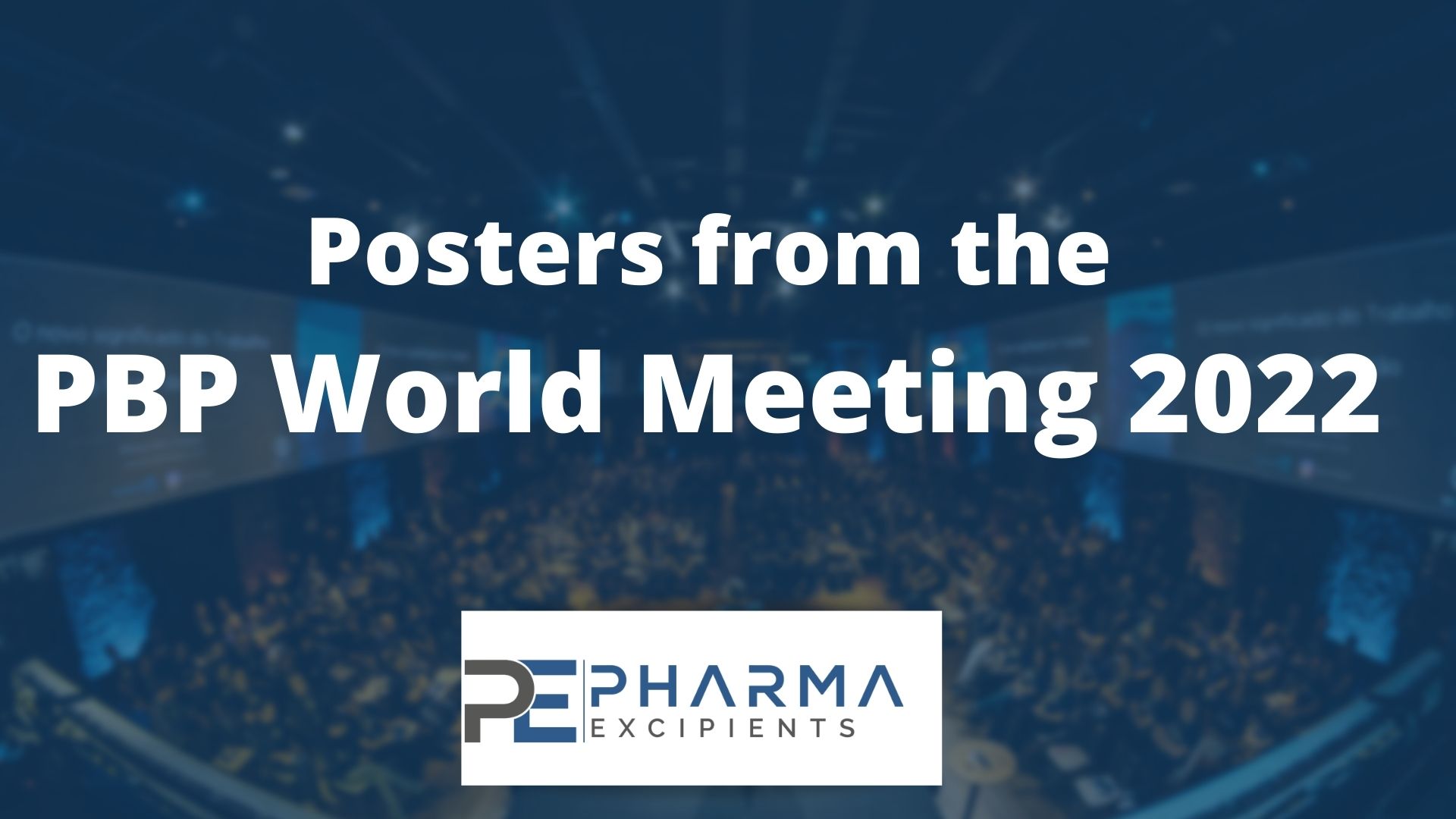Scaling up Aqueous Enteric Coating with Hypromellose Acetate Succinate (HPMCAS) – Scientific poster

The 12th APV PBP World Meeting took place from 28 – 31 March 2022 in Rotterdam. There was a poster section at the event where really interesting scientific posters were presented. Therefore we asked the presenting scientists if we could share their work in addition online with the Pharma Excipients community.
As many scientists send us their posters we will show several posters of the PBP Poster Session stepwise over the next weeks.
Shin-Etsu presented two posters during the PBP world meeting in Rotterdam:
The first one was based on an enteric coating formulation with Shin-Etsu AQOAT® (HPMCAS). In this collaboration with the company Syntegon, they showed how easy it is to scale up the aqueous based partly neutralized HPMCAS coating dispersion on a laboratory equipment up to a production machine namely: Solidlab 1 and 2 and XL Cota 150.
See this first poster from Ilja Lesser,Véronique Henner Kulkarni and Dr. Andreas Sauer from Shin-Etsu
(click on the poster to enlarge it):

Introduction:
Enteric coating is widely applied to protect acid labile drugs from degradation in the gastric environment, or to protect the gastric mucosa from irritating drugs HPMCAS is one of the polymers applied in enteric coating. Several formulation pathways for aqueous enteric coating using Hypromellose Acetate Succinate ( Shin Etsu AQOAT ® are available ). The partially ammonia neutralized dispersion enables a higher polymer solid content (12%) compared to aqueous dispersion coating (7%), resulting in reduced process time However, information about scale up of the partially ammonia neutralized formulation is limited.This study describes the scale up of the partly ammonia neutralized enteric coating dispersion from lab to production scale.
Materials and Methods:
Acetaminophen tablets 10% acetaminophen, 507.9 mg, 10 mm, round, R 11.78 hardness = 332 N, friability 0.18% were produced on a SYNTEGON rotary tablet press TPR 200. The coating suspension table 1 was prepared according to Shin Etsu technical information A 037 (dispersion viscosity 130 mPa·s, pH 5.4 filtered through a 200 µm sieve before coating, a video on the dispersion preparation is available on YouTube. Tablet coating was carried out in three different SYNTEGON perforated pan coaters (Figure 1 Solidlab 1 0 5 kg, lab scale), Solidlab 2 12 kg, pilot scale), and XL Cota 150 120 kg, production scale) Tablet hardness and tablet dissolution were tested on an Erweka TBH 225 and Erweka DT 720 dissolution tester equipped with UV analysis (USP dissolution test pH half buffer change method A procedure, n= 6; USP acid stage pH= 1.2, 750 mL, 37 ºC, λ= 280 nm, apparatus 2, 50 rpm; USP buffer stage pH= 6.8 1000 mL, 37 ºC, λ= 243 nm, apparatus 2, 50 rpm) The surface of coated tablets and the thickness of the film were analyzed using a JEOL JSM IT-100 scanning electron microscope.
Summary
- Paracetamol tablets were coated with Shin Etsu AQOAT ® on Syntegon perforated coating machines
- The scale up processes were carried out successfully Total coating process for 120 kg of tablets onthe XL Cota 150 was finished within 8 hours
- 60 ºC hot water was sufficient to clean the machines No detergent was needed
- The coated tablets passed the USP dissolution test
- All coated tablets passed the USP dissolution test after 6 month in climate cabinet (storage conditions T= 40 ºC and RH= 75
Download the poster as PDF here: Scaling up Aqueous Enteric Coating with Hypromellose Acetate Succinate -HPMCAS
Authors:
Ilja Lesser, Véronique Henner Kulkarni, Dr. Andreas Sauer.
SE Tylose GmbH & Co. KG, Kasteler Str. 45, 65203 Wiesbaden, Germany
More information on the applications of our polymers can be found under:https://www.setylose.com/en/knowledge-base/healthcare
See more PBP World meeting posters:

